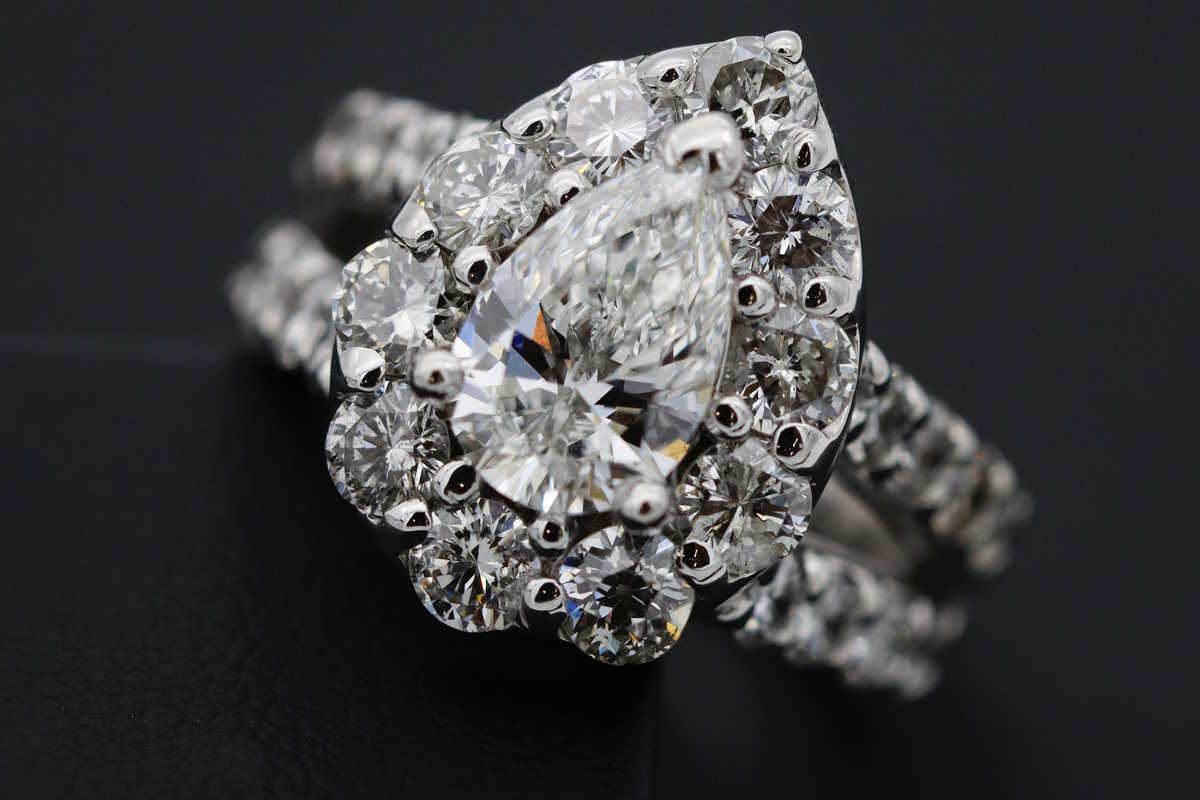If you’re yet to be convinced why man made diamonds deserve much attention, this article will explain why you should get a man made diamond. Continue reading →
Diamonds are among the most valuable gemstones. They have held value for centuries and continued to rise in demand as they’re still highly favored as jewelry.
But certain factors gave birth to lab-grown diamonds growing in popularity yearly for various reasons. While mined diamonds are still revered, lab-grown diamonds are gradually taking over the hearts of those who appreciate their beauty. If you’re yet to be convinced why man made diamonds deserve much attention, this article will explain why you should get a man made diamond.


You could be looking at synthetic diamonds for engagement rings, but even jewelers can only tell lab-grown diamonds apart from mined ones with a unique tool. For some, the idea of man made or lab-grown diamonds means they’re fake, but that’s not the case.
Man made diamonds are made using two different processes: high-pressure high temperature (HPHT) and chemical vapor deposition (CVD).
Diamonds are created with HPHT when carbon is pressed into a metal cube, breaks down, and crystallises after intense electrical-pulsed heat and pressure. During CVD, a tiny diamond must be exposed to carbon-rich gas and extreme temperatures. The gas eventually ionises and clusters around the diamond particle until they crystallise into a full diamond.
While mined diamonds did form underneath the ground (at least 90 miles deep) from pressure and high temperature, the man made version was subjected to the same process in a controlled environment: formed with extreme heat and pressure but only in different settings.
Many jewelers, like DOR in Auckland, offer both mined and lab diamonds. You can compare the appearances and prices. You might also be wondering why diamonds are very expensive. Mined diamonds are costly because of the journey to bring them to the market. Mining companies spend money to extract diamonds from quarries in South Africa, India, Canada, and Australia.
Mined diamonds are cut and polished and sold off as standalone stones or manufactured as jewelry. They often change hands as mediators are involved in the supply chain, and duties and taxes must be paid, mainly when the products are imported.
Lab-grown diamonds cost 40% to 70% less as the journey from laboratory to market is very short. Their creation uses advanced technology and innovations that result in lower production costs. In 2021, you can buy one carat of mined diamond for over USD$ 6,000, but the man made version only costs USD$ 2,300 for comparison.
Large lab diamonds can be produced. You can buy two carats of the same quality and roughly at the exact cost as the cost of luxury brand 1.5-carat engagement rings. Being affordable also comes with other benefits, such as being inclusive, because not only the wealthy can afford high-quality diamonds. It also allows you to focus on saving for other milestones or priorities instead of being fixated on the expense of diamond jewellery.
Sourcing mined diamonds require diesel-run heavy machinery to burrow into the earth for raw diamonds. The traditional sourcing of diamonds has always been a subject of debate because of the impacts of mining on the environment. Mining produces air emissions, deforestation, water contamination or pollution, soil disturbance, noise, and dust. There are also risks to human health and mortality in the mining industry.
That’s also what makes lab-grown diamonds different because they can contribute to stopping climate change as they’re created in a laboratory. Ethically-sourced diamonds are sustainable and completed in a setting that promotes safe working conditions and fair pay and supports eco-friendly practices and human rights.
Growing or creating diamonds in controlled conditions like laboratories can produce similar to higher-quality diamonds. It allows manufacturers to make lab diamonds in varying colours and grades. The technology used for cutting and polishing diamonds allows lab-grown diamonds to have superior quality or colour. The cutting is more uniform, and lab-grown diamonds are likely to have fewer flaws.
For those needing insurance for diamond jewelry, the coverage options and premium amount will depend on your location or which provider you prefer to use. But the general rule is that it’ll amount to 0.5% to 3% of the jewelry amount. A lab-grown diamond that’s more affordable will naturally cost less to insure because of its affordability. Some insurance providers will also provide coverage for as little as 0.5%, which saves you more money.
Man made diamonds are better than mined diamonds because they resemble natural diamonds but are produced in different settings. It makes them eco-friendly as they’re ethically sourced, sustainable, and created in safer and more humane conditions that provide better pay for laborers. The journey of man made diamonds from creation to market is shorter, making them affordable and perfect for everyday wear compared with luxury diamonds.
Although both proxy servers and VPNs aim to improve online security and privacy, they work…
Life is a series of choices. You can stay where you are, grinding away, watching…
In this article, we told you about five tools that remain relevant and in demand…
Using RCM software for healthcare can help simplify the whole process. It can make billing…
Digital twins are altering the operation, maintenance, and enhancement of structures. They allow richer knowledge…
Just dragging the game to your trash or using your computer's basic uninstaller often isn't…